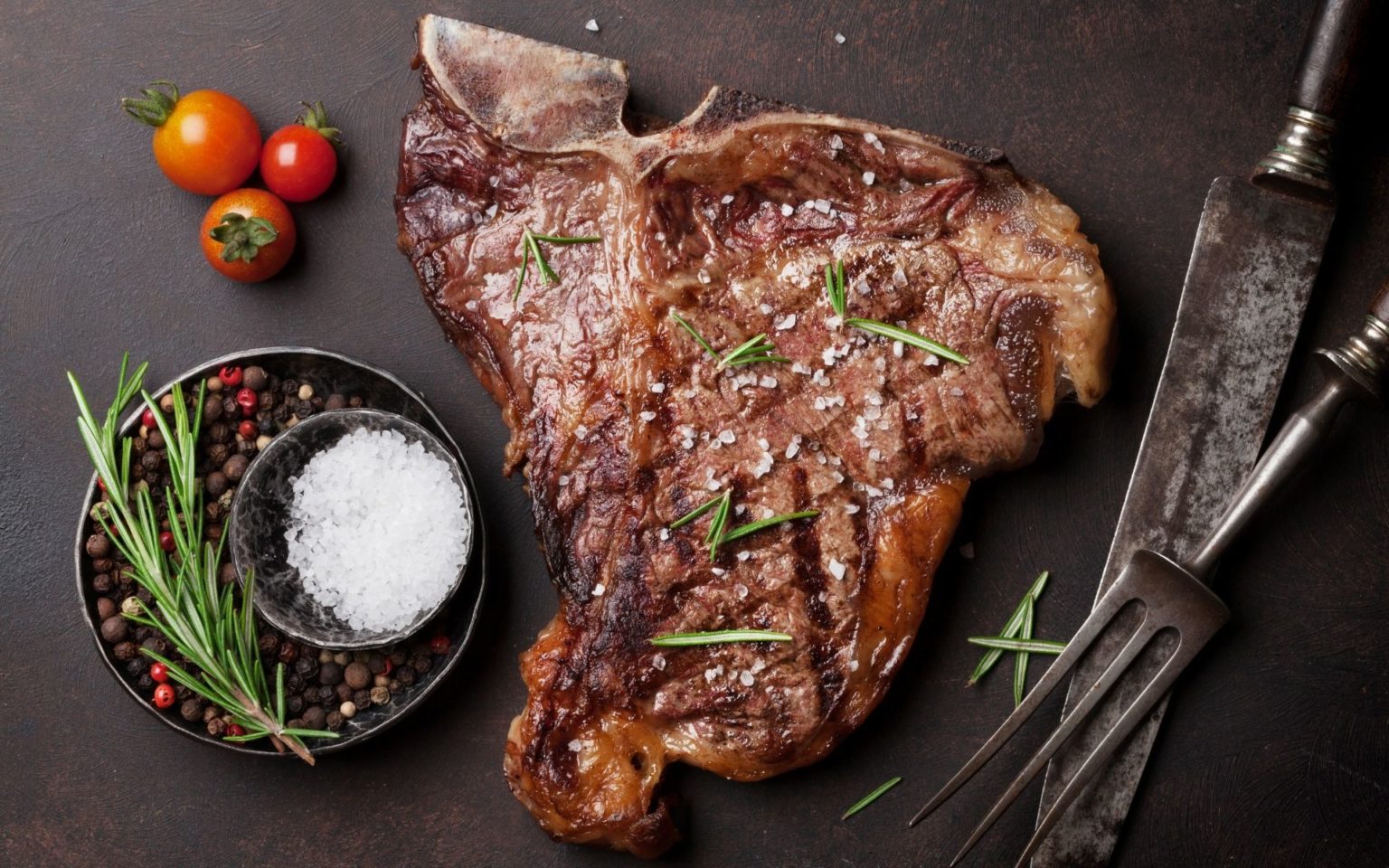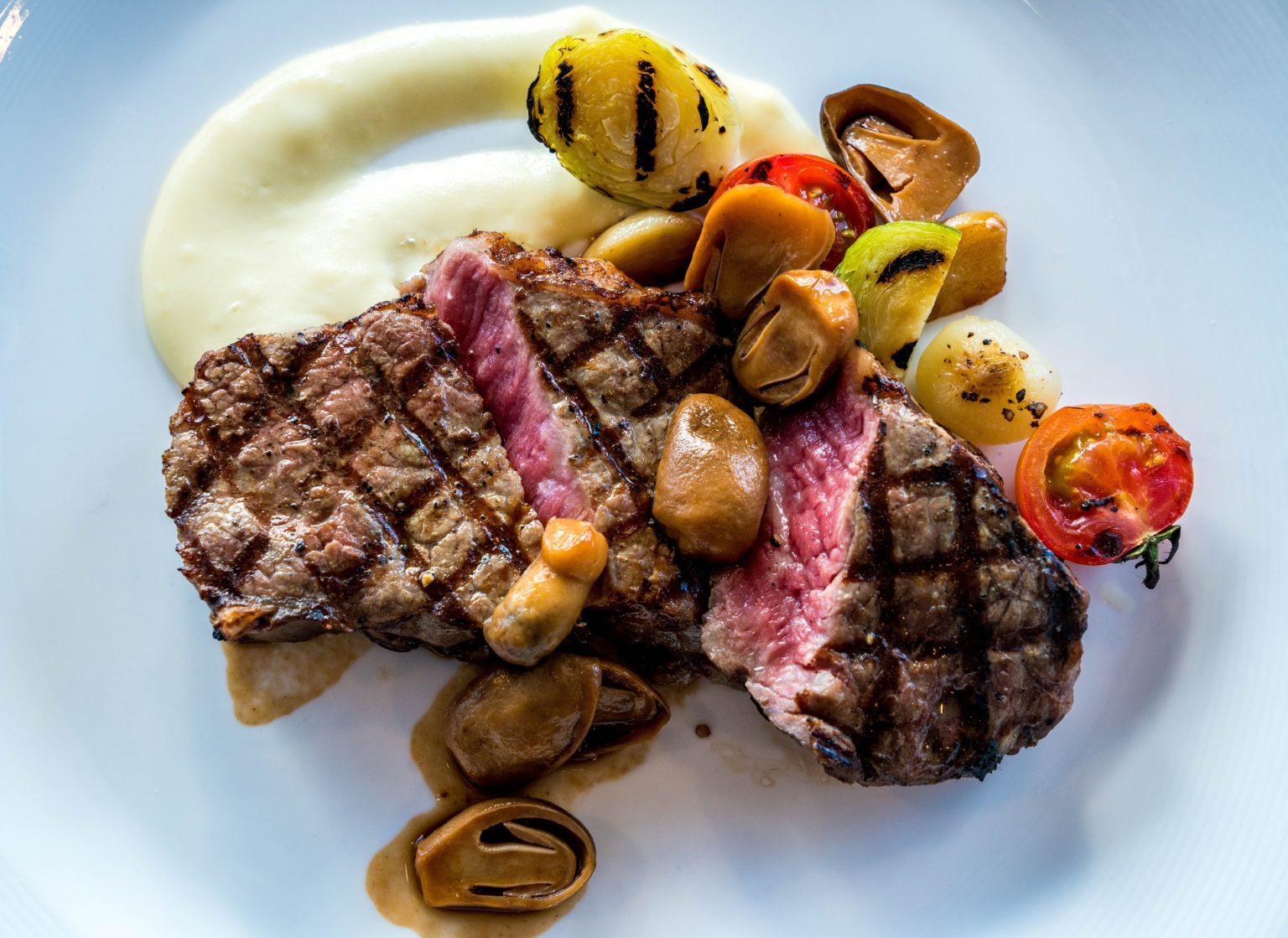How to Cook T-Bone Steak on the Stove: Juicy Results
I. Introduction to Cooking T-Bone Steak on the Stove

A. Recognizing the Versatility and Flavor of T-Bone Steak
- Understanding the Appeal of T-Bone Steak for Meat Lovers
T-Bone steak is a favorite among meat enthusiasts due to its combination of two cuts: the tenderloin and the strip steak. The inclusion of both cuts provides a balance of tenderness and rich flavor, making it a popular choice for steak lovers. - Embracing the Convenience of Cooking T-Bone Steak on the Stove Cooking
T-Bone steak on the stove offers convenience, as it eliminates the need for outdoor grilling. This method allows for precise control over the cooking process and ensures even heat distribution, resulting in a perfectly cooked steak.
B. Unveiling the Key Factors and Considerations for Stove-Top Cooking of T-Bone Steak
- Exploring Preparation Steps for Tender and Juicy Results
Proper preparation is crucial for achieving tender and juicy T-Bone steak. Steps such as seasoning the steak, bringing it to room temperature, and allowing it to rest after cooking all contribute to optimal results. - Gaining Insights into Cooking Techniques for Perfectly Seared Steak Cooking
T-Bone steak on the stove requires mastering searing techniques to achieve a caramelized crust while retaining the steak’s natural juices. Factors such as preheating the skillet and controlling cooking times and temperatures play a significant role in achieving the desired level of doneness.
II. Preparing the T-Bone Steak

A. Selecting and Seasoning the Steak
- Assessing the Importance of Quality Meat Selection for Flavorful Results
Choosing a high-quality T-Bone steak is essential for flavor and tenderness. Look for well-marbled meat with vibrant color and minimal surface blemishes. Quality meat will provide a rich and enjoyable dining experience. - Exploring Seasoning Options to Enhance the Natural Flavors of T-Bone Steak Seasoning
T-Bone steak can be as simple as using salt and freshly ground black pepper. However, additional seasonings such as garlic powder, herbs, or steak rubs can be used to enhance the natural flavors of the meat.
B. Bringing Steak to Room Temperature
- Understanding the Benefits of Allowing the Steak to Reach Room Temperature Bringing the
T-Bone steak to room temperature before cooking allows for more even cooking. This ensures that the steak cooks evenly throughout, resulting in a juicier and more flavorful end result. - Evaluating Timeframes for Proper Meat Temperatures and Cooking Evenness
The time it takes to bring the steak to room temperature will depend on its size and thickness. Generally, allowing the steak to sit at room temperature for 30 minutes to an hour should be sufficient.
III. Searing the Steak on the Stove

A. Preheating the Skillet
- Assessing the Importance of Preheating the Skillet for Proper Searing
Preheating the skillet is crucial for achieving a proper sear on the T-Bone steak. It allows for even heat distribution and ensures that the steak forms a flavorful crust while retaining its natural juices. - Exploring the Ideal Heat Levels for Stove-Top Steak Cooking
Medium-high to high heat is typically recommended for searing T-Bone steak on the stove. This high heat allows the steak to quickly form a crust while locking in the juices, resulting in a tender and flavorful steak.
B. Achieving the Perfect Sear
- Understanding the Techniques for Properly Searing the T-Bone Steak
To achieve a perfect sear, place the T-Bone steak in the preheated skillet and allow it to sear on one side without moving it. Flip the steak once a crust has formed, and sear the other side to the desired level of doneness. The time will vary depending on the thickness and preferred level of doneness. - Evaluating Cooking Times and Flip Frequencies for Desired Doneness
Cooking times will vary based on the thickness of the T-Bone steak and the desired level of doneness. Generally, a few minutes per side will yield a medium-rare steak, but it’s essential to use a meat thermometer to ensure the steak reaches the preferred internal temperature.
IV. Cooking T-Bone to Desired Doneness

A. Using a Meat Thermometer for Accuracy
- Assessing the Importance of Using a Meat Thermometer to Achieve Desired Doneness Using a meat thermometer ensures that the T-bone steak is cooked to the desired level of doneness accurately. This helps avoid overcooking or undercooking, resulting in a perfectly cooked steak.
- Exploring Temperature Ranges for Rare, Medium-Rare, Medium, and Well-Done Steaks Different degrees of doneness require specific internal temperatures. For rare, the temperature should be around 125°F (52°C), while medium-rare is about 135°F (57°C). Medium is achieved at approximately 145°F (63°C), and well-done is around 160°F (71°C).
B. Resting the Steak for Juicy Results
- Understanding the Importance of Resting the T-Bone Steak After Cooking Resting the T-bone steak after cooking allows the juices to redistribute within the meat, resulting in a juicier and more flavorful steak. Resting also ensures that the steak retains its desired level of doneness throughout.
- Evaluating Resting Times and Techniques to Ensure Juicy and Flavorful Meat Resting times typically range from 5 to 10 minutes, depending on the thickness of the steak. The steak should be tented loosely with foil to retain heat while allowing excess moisture to evaporate, preventing the steak from becoming soggy.
V. Serving and Enjoying the T-Bone Steak
A. Slicing and Presentation
- Assessing Slicing Techniques for Presenting T-Bone Steak To present the T-bone steak, slice across the grain of the meat to ensure tenderness. Start by cutting along the T-shaped bone, separating the strip steak and tenderloin sections. Slice each section into even portions, maintaining the desired thickness.
- Exploring Plating and Garnishing Options for Eye-Catching Presentation For an eye-catching presentation, consider plating the T-bone steak alongside complementary side dishes. Garnish the steak with fresh herbs, such as parsley or thyme, or add color with roasted cherry tomatoes or sautéed mushrooms.
B. Enhancing the Dining Experience
- Understanding Accompaniments and Sauces to Pair with T-Bone Steak Accompaniments such as roasted potatoes, grilled vegetables, or a fresh salad can complement the T-bone steak. Additionally, consider serving a flavorful sauce like chimichurri, peppercorn, or béarnaise to enhance the taste and add variety to the meal.
- Evaluating Suggested Wine or Side Dish Pairings for a Complete Meal Pairing the T-bone steak with a suitable wine enhances the dining experience. For example, a full-bodied red wine like Cabernet Sauvignon or Malbec pairs well with the richness of the steak. Side dishes such as garlic mashed potatoes or creamed spinach can also complement the flavors of the T-bone steak.
Cooking T-Bone steak on the stove offers convenience and flavor for steak enthusiasts. This comprehensive guide has highlighted the preparation steps, searing techniques, cooking times, and resting periods to achieve perfectly seared and juicy results. By following these steps and using a meat thermometer for accurate doneness, you can confidently cook T-Bone steak on the stove and enjoy a delicious and satisfying meal. Let’s embrace the art of stove-top cooking and elevate our steak-cooking skills to create memorable dining experiences with perfectly cooked T-Bone steak.
